Fun with Wild Bird Feeding: An Intro Guide
Wild Bird Feeding is fun and a great way to get closer to nature. If you’ve ever thought about starting, here’s a complete “how to” guide!
Bird Feeding is fun! During the pandemic, it helped my family feel connected to something outside of our then small world.
Of course we had so much fun, we expanded the next year! We love taking care of “our birds” and watching them cavort and raise families!
If this is something you’ve considered trying, here are some great tips to get started! And of course lots of pictures of my new friends!
Why Feed the Birds?
Bird feeding is fun, but did you know that it can have other benefits as well? For both people and birds!
Human benefits include:
- Getting in touch with nature. Checking out your birds is the perfect excuse to stop for a moment and gaze out at nature. We all need a little reset sometimes and this is perfect!
- Getting to know your local birds. We learned that woodpeckers are “king of the hill” and other birds give them feeding priority. And that blue jays are messy eaters, brushing their rejected seeds onto the ground to the delight of the ground feeders!
- Increasing your appreciation of seasonality. Did you know that young cardinals go through an “ugly duckling” phase where they look a bit mottled and scruffy? Read more about this at Bird Facts!
- Of course don’t forget that fun and it just might help you Raise Kids who Care about the Planet!
For our feathered friends, it can:
- Help birds meet the needs of hungry chicks in the summer.
- Provide extra food to bulk up for migration as well as a rest stop for those moving through.
- Help birds deal with bad weather periods in the winter (a bird bath for hydration is good here too).
But I also learned that bird feeding can be controversial. Per the US Fish and Wildlife Service website, there are a range of concerns from aiding non-native species to encouraging predation and spreading disease.
Predation and disease seem the most problematic. But happily there are practices that can help mitigate these. These include avoiding cat-heavy locations (our cats are strictly indoor bird watchers), providing proximity to trees and bushes for shelter, keeping the proper distance from windows to minimize collisions and practicing good feeder hygiene. I cover these is more detail below.
Are you ready to begin!
Bird Feeding Supplies to Get Started
I am happy to tell you that there are minimal requirements to getting started with this new hobby! In fact, you can begin as simply as tossing some seed on the ground.
Of course, while ground feeding is legitimate, you’re likely to have much better results if you use a bird feeder! A feeder holds a store of seeds so you aren’t constantly refilling, protects the food from the elements and keeps the seed from getting pillaged by raccoons and other interlopers.
And speaking of pillaging, you’ll also want a baffle to keep squirrels and other “poachers” away from the feeder!
Finally you’ll need a method to mount the feeder, like a pole or chain, and of course some bird seed.
A Good “Intro” Bird Feeder
It may surprise you to learn that different bird species prefer different feeders. And if you continue, you’ll eventually own a varied collection. But you can do very well with a single one to start!
The feeder that I recommend is called a “Hopper Feeder.” These look a little like houses or gazebos and have a floor, roof and sides to protect the seeds from the weather. The seed is dispensed where the walls meet the floor and is replenished by gravity.
This style is popular with a wide variety of birds. Filled with a good seed blend, it will get you off to a great start.
And a hopper feeder will actually gives you good access to ground feeding birds as well. Pretty soon you’ll see visiting blue jays will brushing the seeds they don’t like onto the ground. This will attract ground feeding birds underneath, along with squirrels and rabbits, which are also cute.
How to Mount Your Bird Feeder
Now you’ll need to set up your feeder. A bird feeder can be hung from something like a roof overhang, or it can be mounted on a bird feeder pole.
Our hopper feeder is mounted on a length of threaded galvanized steel pipe that my husband picked it up at a home improvement store and simply pounded into the ground (he protected the threads with a pipe cap while he pounded). This made a strong and durable bird feeder stand.
Now some feeders may have a screw attachment on the bottom which make it easy to attach to a threaded pole. Ours didn’t so he bought a threaded flange at the same store and attached that to the bottom of the feeder as a mount.
Our other feeders are hung from the eves of the house by a chain. The chain attached to a hook that is screwed into the overhang studs. While this is very easy, it’s a challenge to see the ground activities below unless it is in front of a full length window.
And for where to place your feeders, check out the section on Where to Place Bird Feeders below.
Adding a Baffle
Next it’s time to add a baffle. Your method of mounting your feeder will determine the type of baffle you’ll need.
A baffle is a device that prevents unwanted animals from getting access to your feeder. That’s because, although a squirrel or bunny might be cute eating leftovers on the ground, a determined poacher like a racoon can open and empty a feeder overnight.
For a pole mounted feeder you’ll want to add a baffle that sits below the feeder to keep “poachers” from climbing up. We started with a DIY squirrel proof baffle that worked for years. Then this summer some (really long limbed?) raccoons began raiding the feeder nightly. So we moved to a torpedo baffle, which solved the problem.
For a hanging feeder, you’ll need a tilt top or dome baffle which is placed above the feeder where it connects to the chain. This is usually (though not always) sufficient.
A Sad Story
Yes, ages ago, in our first attempt at bird feeding, we hung our feeder from a basketball hoop in an attempt to frustrate a determined squirrel. We were feeling pretty smug until we noticed a dirty mark on the backboard. Not long after the squirrel popped its head through that mark, which turned out to be a newly gnawed hole.
Squirrel 1, humans 0.
So get a baffle.
Adding Suet Bird Feeders
I know I told you that you only need one feeder, but I’d like to suggest an easy “accessory,” a suet feeder. Suet feeders are cage-like boxes that hold a block of suet. Suet, a mixture of fat and seed, is loved by many birds and provides especially good energy in the winter.
While you actually can hang a suet bird feeder all by itself, we started out hanging one from our hopper feeder. This worked well but even better was mounting it so it stayed fixed. The woodpeckers especially loved this and well, it does look really silly to see a large woodpecker swinging upside down from a hanging suet feeder!
Finally we went to three suet feeders, since they were so popular. One went on top of the feeder and others on each of the closed sides. Three feeders, no, err, less waiting!
Where to Place Bird Feeders
There are three main things to consider when locating your bird feeder station. These are your view of the feeder, the distance from the house to avoid collision, and proximity to tree and bush shelter.
Avoiding Window Collisions
Since you’ll want to watch the birds they should be within sight of a window. But you’ll also need to balance this with the collision danger that birds can face. While you’ll read guidelines that vary widely, I actually found a study that had been conducted by the Wilson Ornithological Society
The study notes that “No fatalities were recorded when feeders were located within 1 m (~ 3 ft) of a window, but a marked increase in mortality occurred when feeders were placed 5 (~16 feet) and 10 m (~33 ft) from the glass.”
So, bottom line, less than 3 feet from a window is the best option for collision risk—and it may work well logistically if you can hang a feeder from your eves. And you want to avoid the area between about 15 and 35 feet from your windows.
As I mentioned, most of our feeders are hung from the eves so are within 3 feet of a window. And while we have periodic collisions at these windows, the birds are slowing down to feed, so they aren’t even knocked out.
Our hopper feeder, where we take in most of our ground viewing, is about 10 feet from the house, in view of our patio doors. And for reasons I can’t explain we don’t seem to experience any collisions here—perhaps the deck feels like a barrier to them. This gives us good viewing of both the feeder and the ground party!
Providing cover
Your next consideration is a location with cover, like a tree or bush, for the birds. This is significant factor in attracting birds since, if they don’t feel safe, they’re less likely to visit.
Try to provide some cover about 3 – 12 feet from the feeder. Too close and it becomes a jumping off point for squirrels or raccoons, too far and it’s not helpful to escape from predators. Plus it can be fun to see the birds queued up in the bush waiting for a spot at the feeder.
Bird Feeding Logistics
And finally a consideration that no one mentions is the height of the feeder. If the tallest person in the household sets up the feeder, make sure it isn’t too high for someone shorter who might need to refill if the first person goes on a business trip. Not naming any names.
What to Feed Birds
Types of food
Just like having feeder preferences, different birds will eat different foods–and there are many different bird seed types and blends. While you could do an extensive analysis, the easiest answer is a good quality blend.
We have used both a local birding store and Tractor Supply for our blends and we tested several varieties to see what worked best. We also add additional black sunflower seeds. Those are expensive but the favorite of many species–and we like to indulge our birds!
We did something similar for the suet. We tried out a variety of mixes to gauge preferences, then once we established a favorite, started buying bulk packs. Suet works well all year round in relatively cool Wisconsin. But since suet spoils rapidly, the Audubon Society suggests making up a mix of peanut butter and cornmeal in lieu of suet in hot weather.
Finally, avoid feeding birds bread and other refined “people food,” though some unprocessed options like unsalted raw nuts can be a treat.
Bird food storage
We buy our bird seed in bulk (frankly, birds can eat like pigs) and store it in the garage. We save (thoroughly cleaned) five gallon plastic cat litter tubs which work beautifully. If you leave out an open bag—or even some sealed bags, you are likely to attract mice. (Ask me how I know this.)
What Season to Start Feeding
According to the Humane Society, “Bird feeding is most helpful at times of when birds need the most energy, such as during temperature extremes, migration, and in late winter or early spring, when natural seed sources are depleted.” And, they note, summer feeding can also be helpful for birds feeding young or those with high metabolic requirements like finches or hummingbirds.
We feed birds all year round, but everyone needs to start sometime and I think that fall is a great option. You may help out migrants (aka snow birds 🙂 ) who are getting ready to make a winter move. And when year round or winter residents come by, it can help get your feeder established for feeding the birds in winter.
But really, start when it works for you.
Bird Feeder Hygiene
Spreading disease at feeders can be a serious concern, so you’ll want to pay attention to bird feeder hygiene.
This starts with cleaning feeders as appropriate and discarding any food that gets old or spoiled. We clean anything “wet” like hummingbird feeders every time we add new food. And sources suggest replacing any suet that isn’t used within 3-5 days in summer or switching to a less heat sensitive alternative. Even dry seed may need to be discarded if it goes uneaten for an extended period. And clean below feeders as needed of spilled seed remnants.
Finally, pay attention to any alerts about bird diseases. A number of years back there was a finch conjunctivitis that got so bad, everyone took their feeders down.
If you see alerts, I recommend checking out local birding sources rather than just the national news which may lack nuance. During the spring 2022 avian influenza outbreak, some national sources said to stop feeding all backyard birds. Local sources, however, pointed out that it wasn’t affecting local song birds species so unless you were a stop for migratory birds like ducks and geese, or had nearby poultry farms, feeding was fine.
Resources & FAQs
Need help identifying a bird (maybe lots of birds)? Check out Cornell Ornithology Lab site.
Are the birds migrating through your state now? Check out the Migration Radar where you can see what’s happening down to the county level!
We always worry about the birds and other animals that feed on the ground in winter. To help them out we set out stones for spilled seed and provide other ground options.

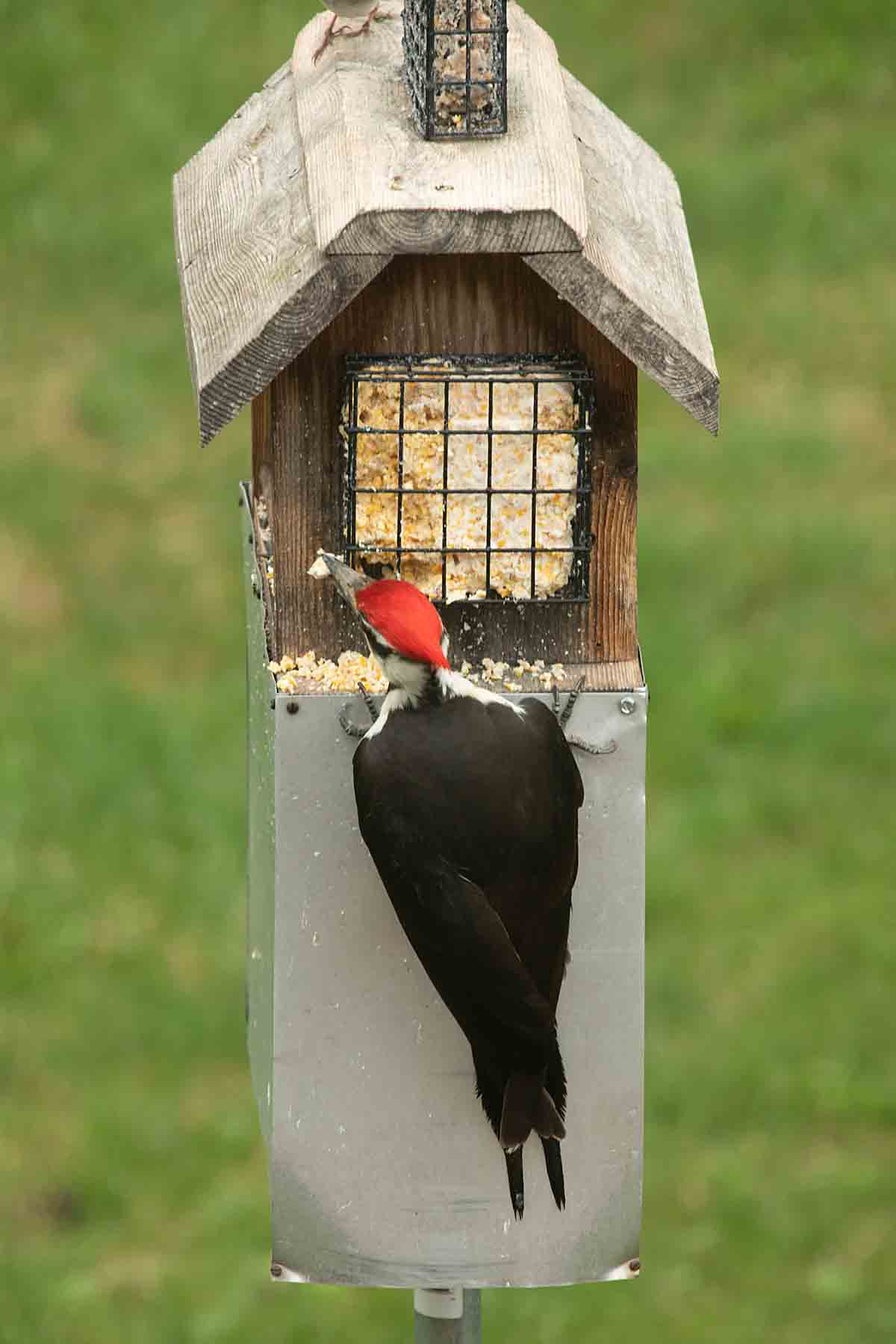



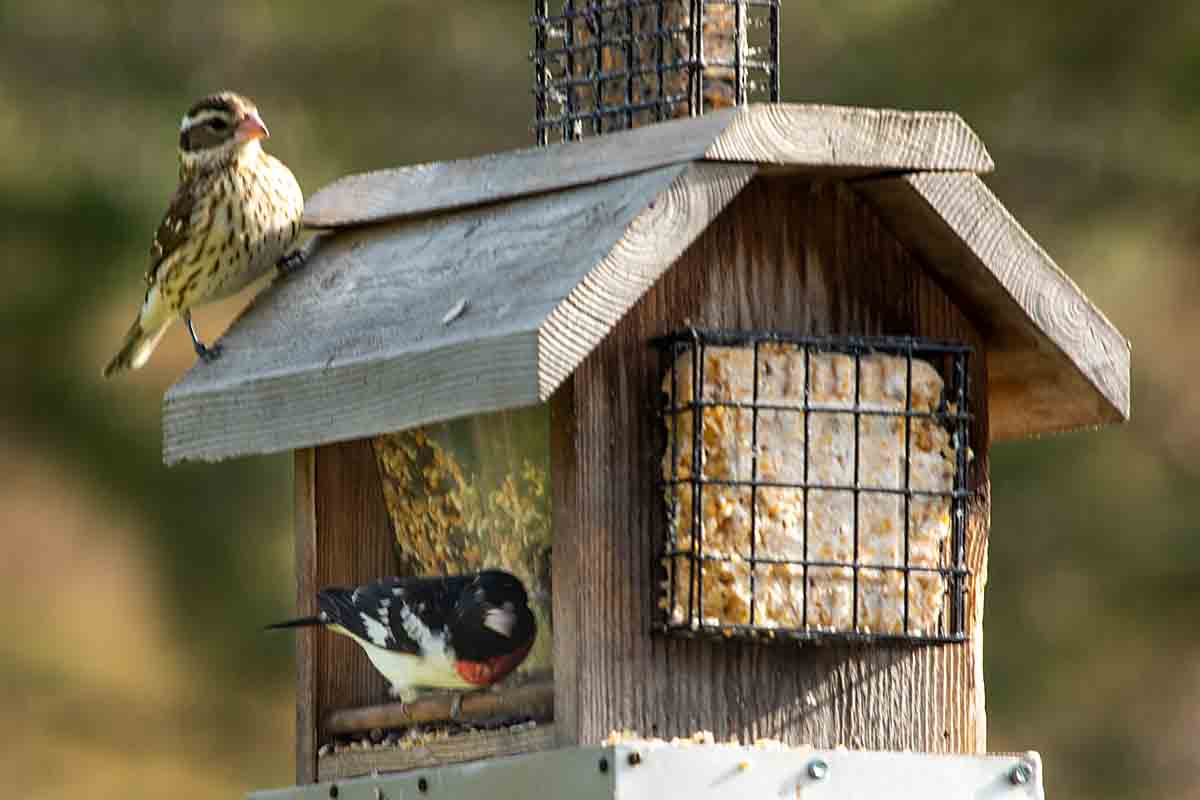



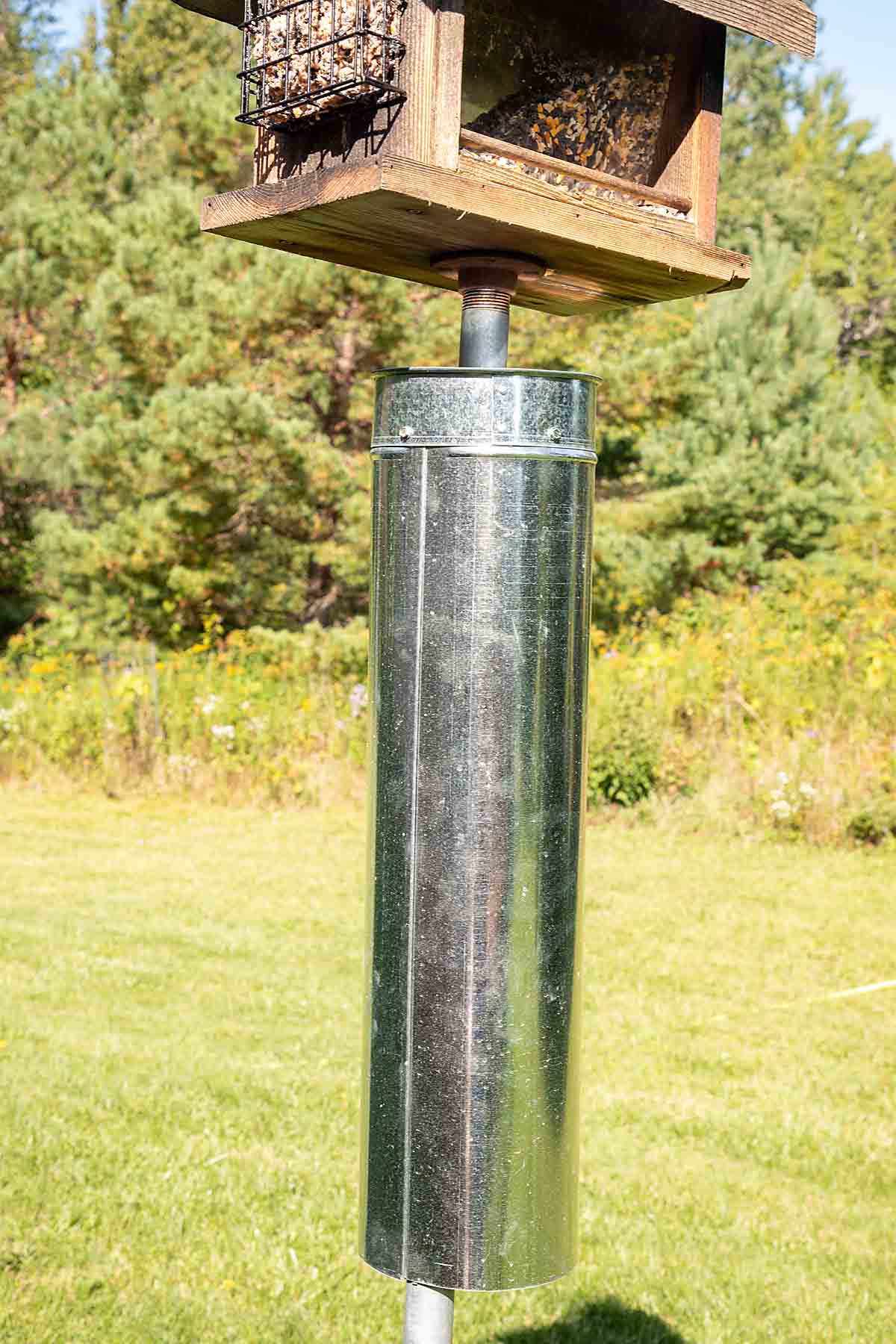

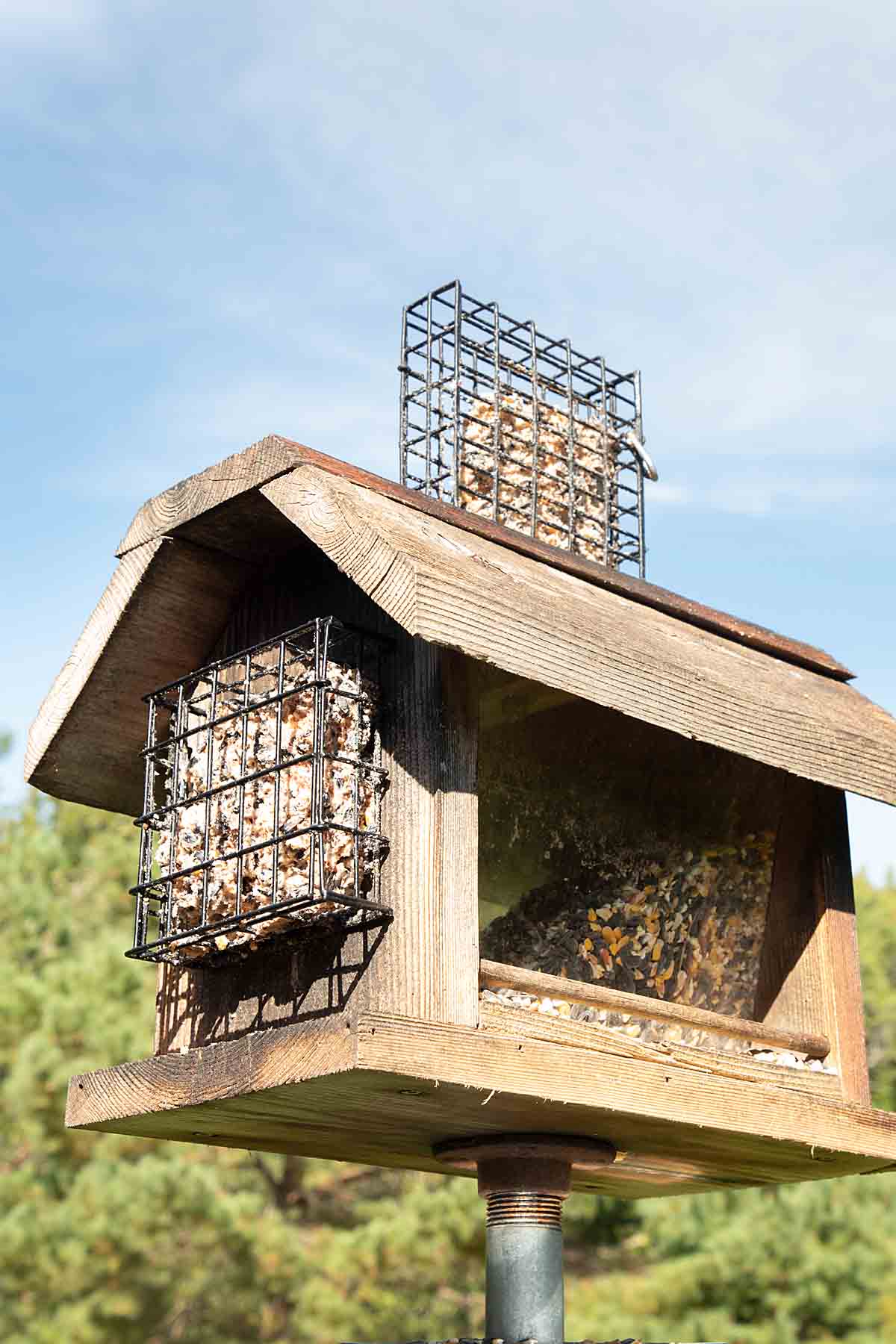
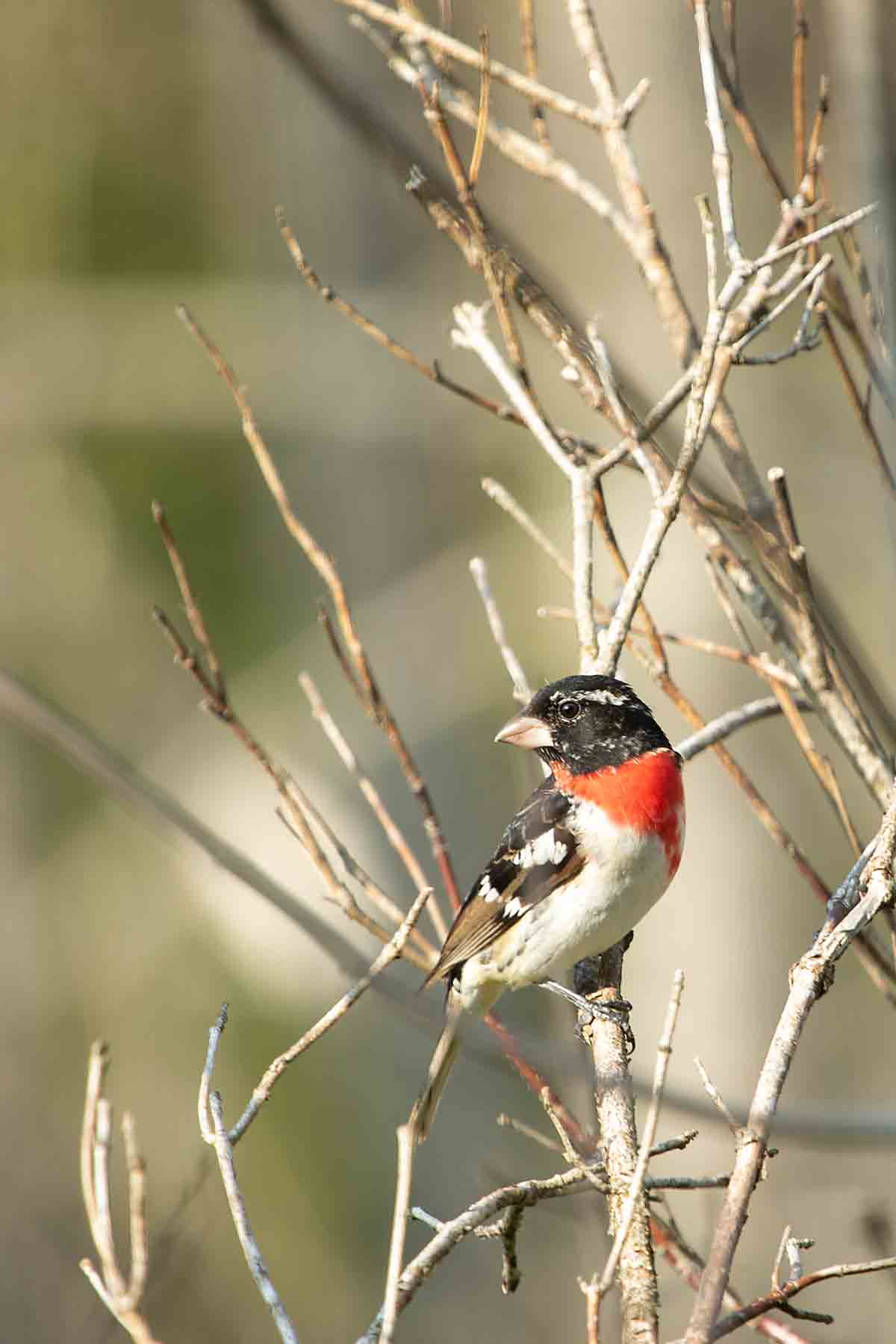
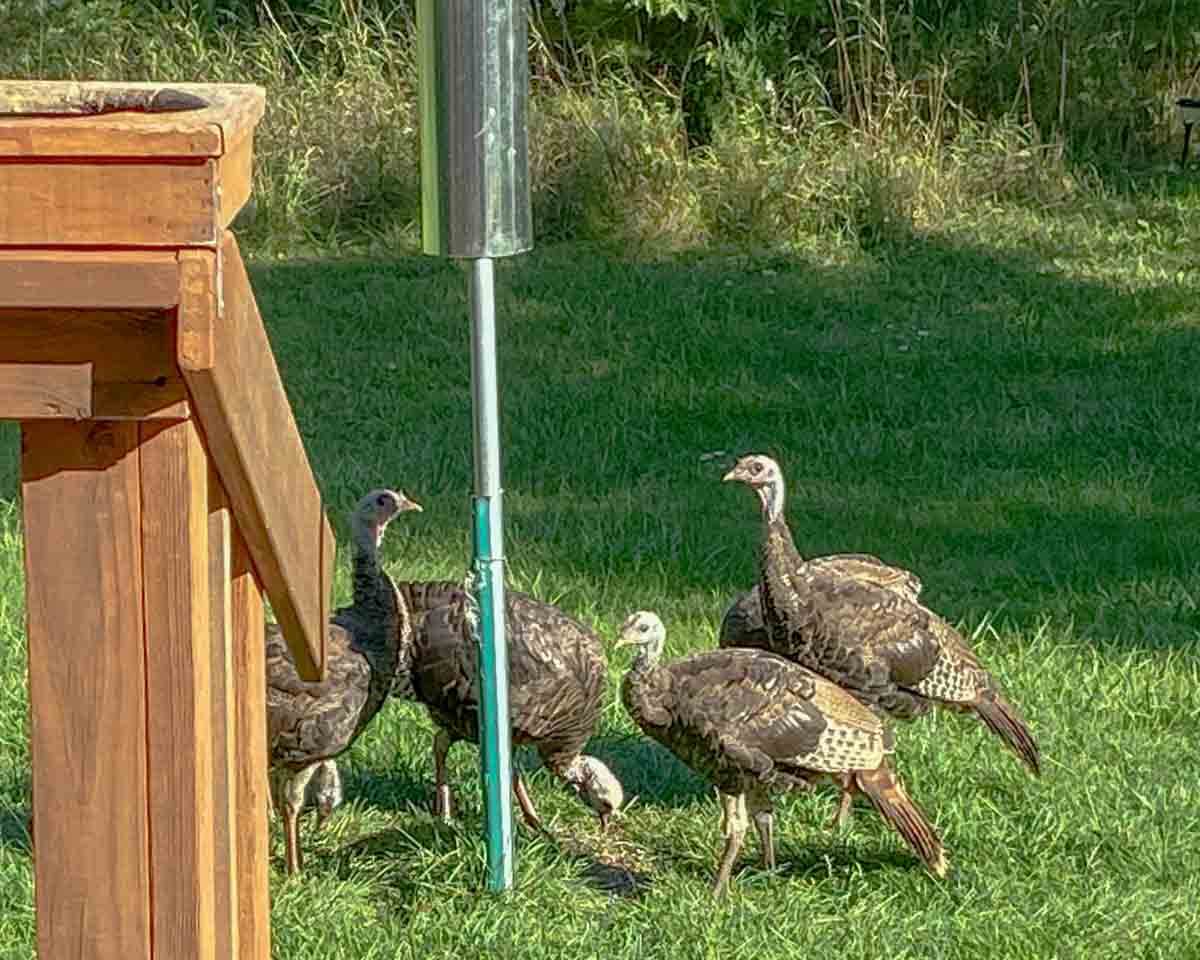
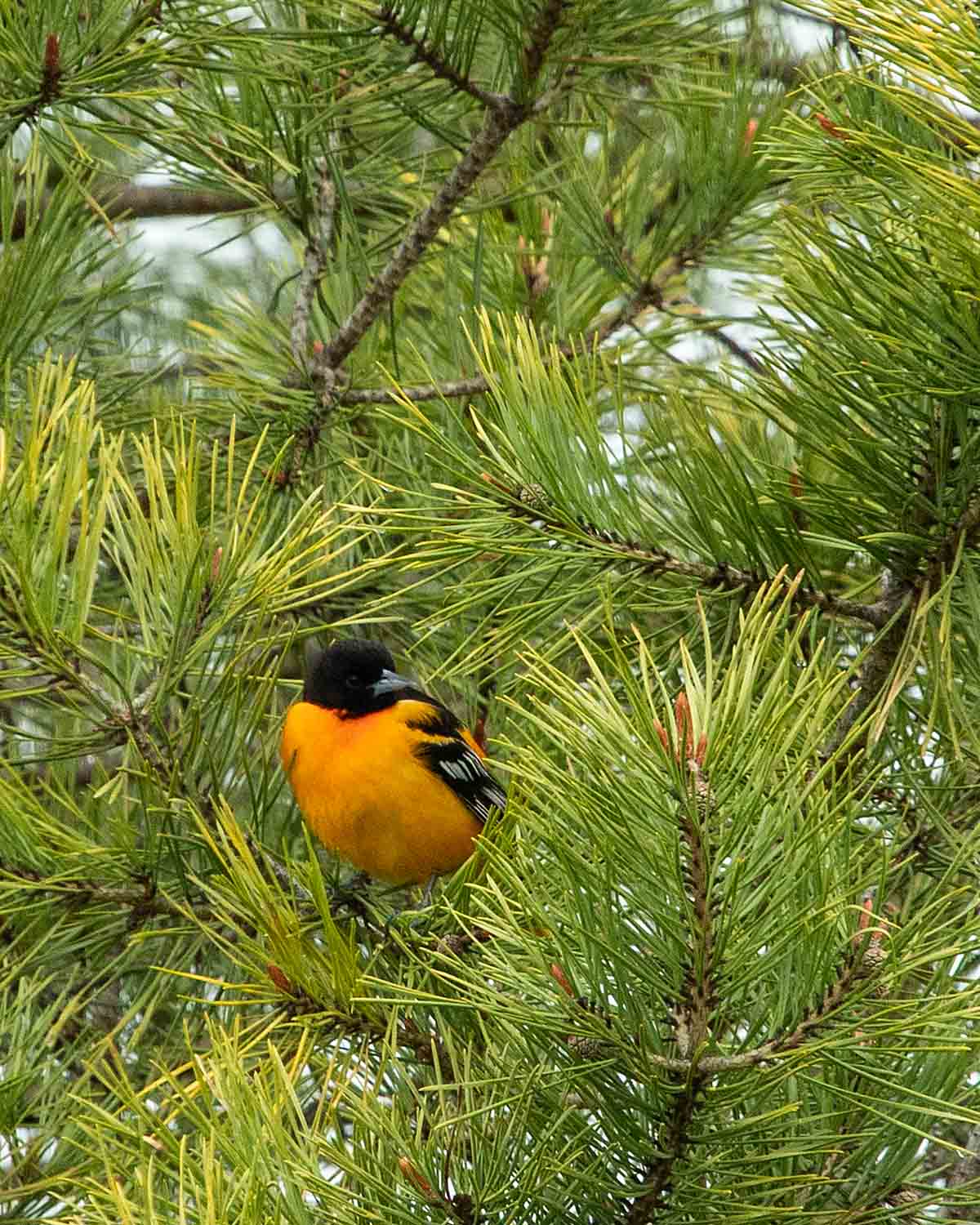

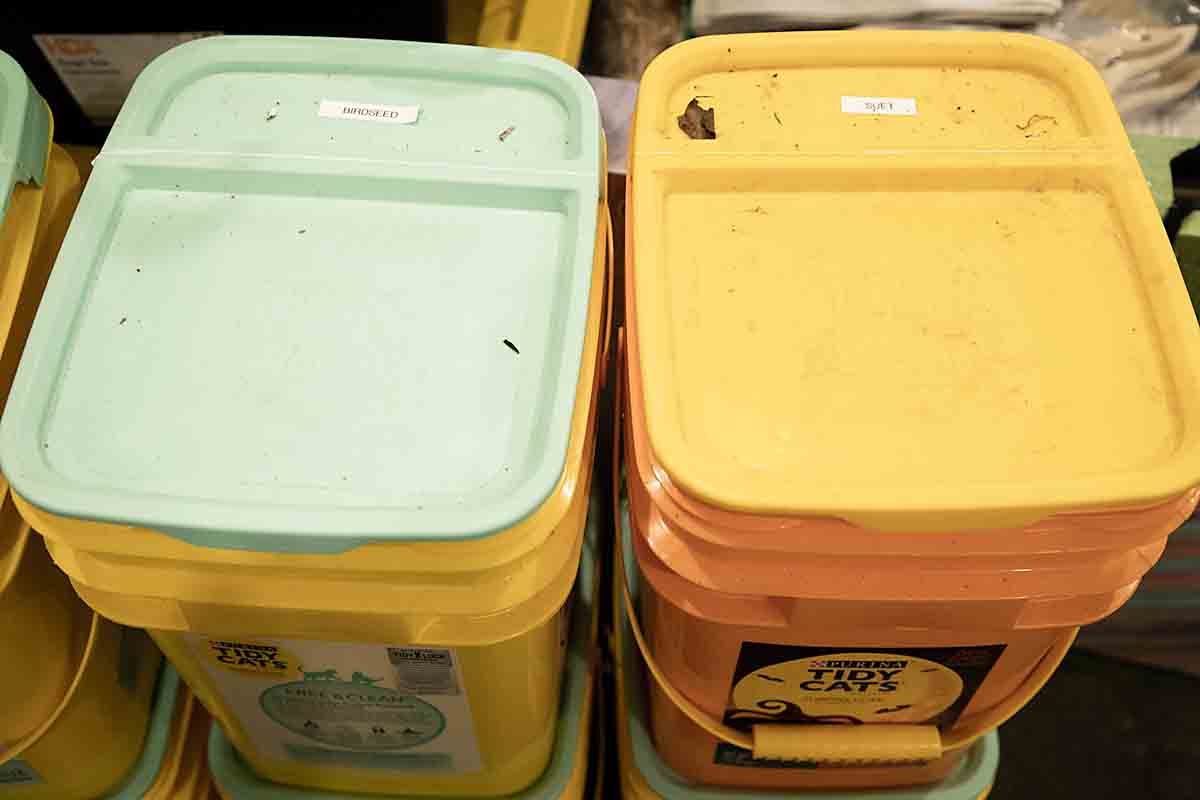

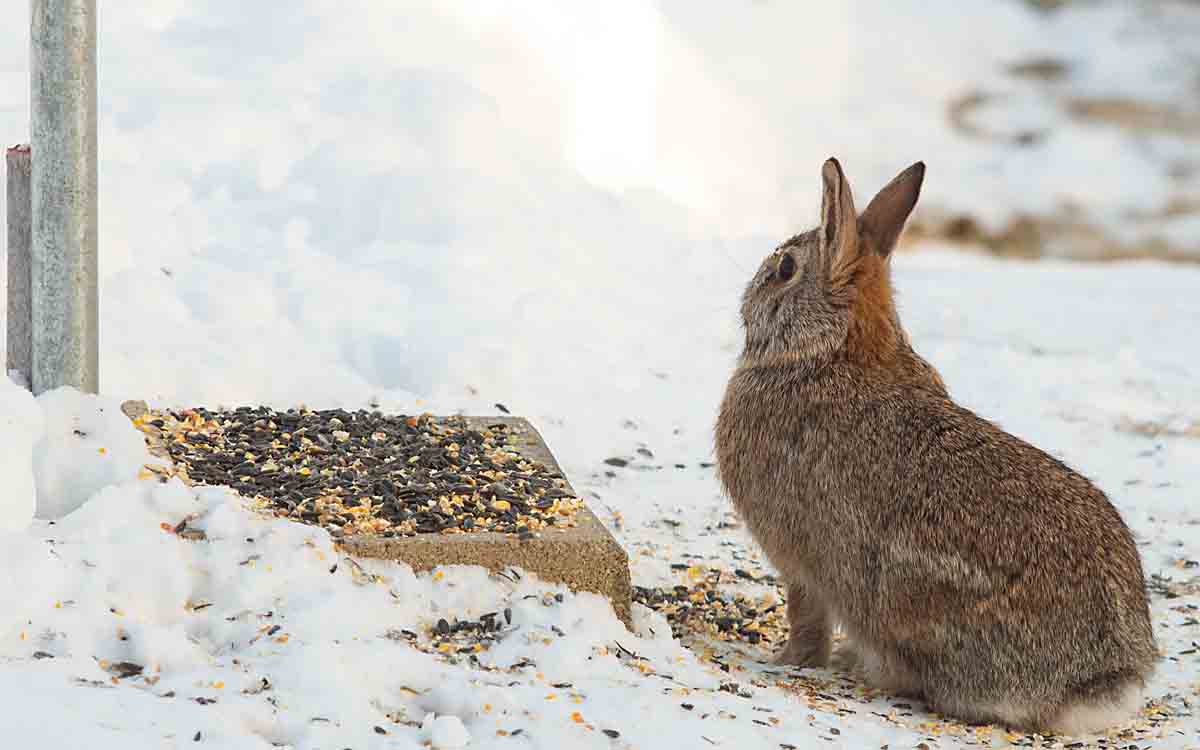

Great tips! I’ve got a few more weeks before I can get my feeders up due to bears but I’m really looking forward to welcoming my feathered friends back!
I am so thankful not to have to worry about bears!